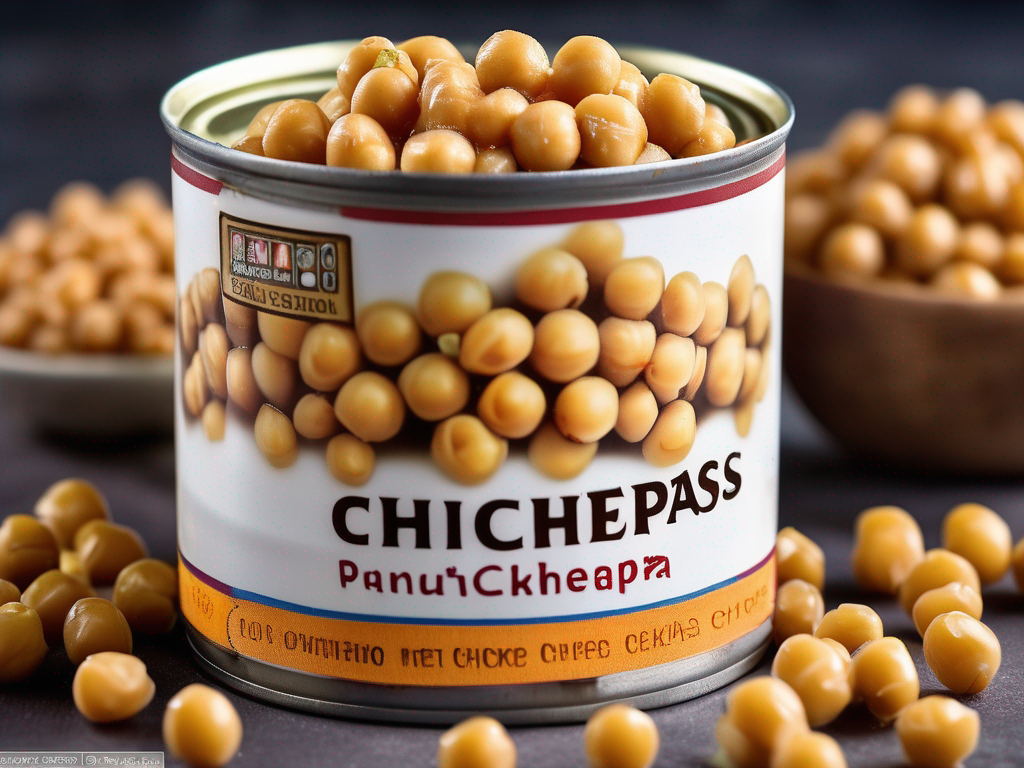
How to Properly Store Canned Chickpeas for Long-Term Freshness
How to Properly Store Canned Chickpeas for Long-Term Freshness
Canned chickpeas are a versatile pantry staple that can be used in various dishes, from salads to stews. Proper storage is essential to maintain their freshness and quality over an extended period. In this blog post, we will discuss the best practices for storing canned chickpeas to ensure they remain safe to eat and delicious for a long time. (Canned chickpeas)
Understanding Canned Chickpeas
Canned chickpeas are cooked and preserved in a can with water and salt, making them convenient to use straight from the pantry. They are a great source of protein, fiber, and essential nutrients like iron and folate. When stored correctly, canned chickpeas can last for a long time without compromising their taste or texture.
Benefits of Canned Chickpeas
- Convenient and ready-to-use
- Nutrient-dense
- Versatile ingredient for various recipes
- Long shelf life when stored properly
Proper Storage Tips for Canned Chickpeas
Ensuring the long-term freshness of canned chickpeas involves storing them in a cool, dry place away from direct sunlight and extreme temperatures. Follow these tips to maintain the quality of your canned chickpeas:
1. Choose an Ideal Storage Location
- Store canned chickpeas in a cool, dark pantry or cupboard away from heat sources.
- Avoid storing them near appliances that generate heat, such as the stove or dishwasher.
2. Check the Expiry Date
- Before purchasing canned chickpeas, check the expiry date to ensure they have a long shelf life.
- Rotate your pantry stock by placing newer cans at the back and older ones at the front to use them before they expire.
3. Maintain Proper Temperature and Humidity
- Keep the storage area at a consistent temperature, ideally between 50-70°F (10-21°C).
- Avoid storing canned chickpeas in areas with high humidity, as it can promote mold growth and spoilage.
4. Use Airtight Containers for Opened Cans
- If you only use a portion of the canned chickpeas, transfer the leftovers to an airtight container and refrigerate them.
- Use the leftovers within 3-4 days to maintain their freshness and flavor.
5. Prevent Cross-Contamination
- Store canned chickpeas away from raw meat, poultry, and seafood to prevent cross-contamination.
- Keep them on a separate shelf or in a designated area to avoid any potential food safety issues.
Safety Precautions for Storing Canned Chickpeas
While canned chickpeas are a convenient and safe option for pantry storage, it's essential to follow some safety precautions to ensure they remain safe to eat:
1. Inspect Cans Before Use
- Before opening a can of chickpeas, inspect it for any signs of damage, rust, or leakage.
- Do not consume canned chickpeas if the can is bulging, dented, or shows any signs of contamination.
2. Store Unopened Cans Properly
- Keep unopened cans of chickpeas in a cool, dark place to maintain their quality.
- Avoid exposing them to extreme temperatures or storing them in humid areas.
3. Follow Storage Guidelines
- Adhere to the manufacturer's storage instructions on the can for the best results.
- If there are specific storage recommendations, such as refrigeration after opening, follow them to ensure food safety.
4. Practice FIFO Method
- FIFO stands for "first in, first out," meaning you should use the oldest canned chickpeas first to prevent spoilage.
- Label your canned goods with purchase dates to track their freshness and consumption order.
Conclusion
Proper storage of canned chickpeas is crucial to maintain their freshness, flavor, and nutritional value. By following the storage tips and safety precautions outlined in this blog post, you can ensure that your canned chickpeas remain safe to eat and enjoyable for an extended period. Remember to check the expiry dates, store them in a cool, dry place, and follow all safety guidelines to make the most of this versatile pantry staple.
For more information on [canned chickpeas](/food/canned chickpeas), visit our website. Happy cooking and enjoy your delicious meals with properly stored canned chickpeas! (Canned chickpeas)
Related Posts
Here are some other articles you might find helpful:
- The Ultimate Guide to Properly Storing Chickpeas to Prevent Mold Growth
- The Ultimate Guide to Extending the Shelf Life of Canned Chickpeas
- Top Tips for Determining If Canned Chickpeas Have Gone Bad
- Deliciously Repurposing Expired Dill Pickles: Creative Recipes and Safety Tips
- Signs that Chickpeas Have Gone Bad and Should be Thrown Out
Authoritative Food Safety References
These agencies and university labs inform every tip and health precaution we publish.
USDA FoodKeeper – Cold Storage Guidelines
Official refrigerator, freezer, and pantry timelines maintained by the U.S. Department of Agriculture.
Visit USDA FoodKeeperFDA Produce Safety Rule & Grower Guidance
Field-to-fridge handling practices that prevent contamination of fruits, vegetables, and leafy greens.
Visit FDA Produce SafetyCDC Foodborne Illness Prevention Hub
Surveillance-backed guidance on pathogens, symptoms, and steps to reduce foodborne illness risk.
Visit CDC Food SafetyUC Davis Postharvest Technology Center
University research detailing optimal storage atmospheres for produce after harvest.
Visit UC Davis PostharvestPenn State Extension – Home Food Preservation & Safety
Peer-reviewed extension bulletins on safe canning, chilling, and reheating practices.
Visit Penn State ExtensionScan your food directly and get instant safety info using our AI-powered camera feature.